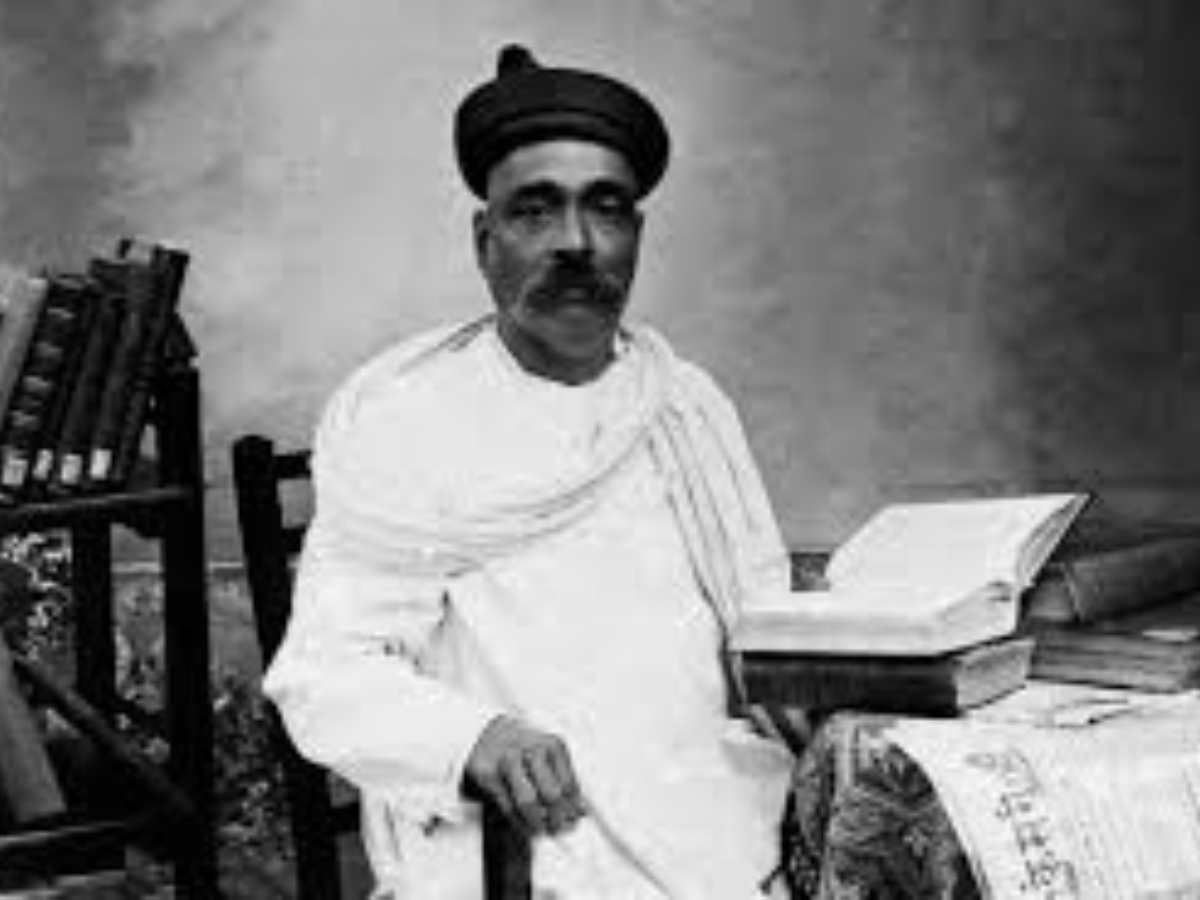People honoured Lokmanya Tilak by offering food as a tribute during his death anniversary. After his statue was installed in front of the then Reay Market (now Mahatma Phule Mandai), citizens queued to place naivedya, a sacred food offering, at his feet. “Annadaan”, or the charity of food, became a major feature of his remembrance in Pune.
Lokmanya Bal Gangadhar Tilak passed away on August 1, 1920, at Sardargriha in Bombay. The news of his death led to deep sorrow across the country. His funeral procession in Mumbai gathered the largest crowd seen at Girgaum Chowpatty. On August 3, a special train brought Tilak’s ashes to Pune in a sandalwood casket carried by his sons. They placed the casket on a palanquin drawn by a bullock cart. Thousands stood with folded hands and tearful eyes along the four-kilometre route. Devotees chanted “Tilak Maharaj ki Jai” and “Ramkrishna Hari” as the palanquin passed by.
Procession Marks Unity Beyond Religion
As the palanquin reached the mosque near Daruwala Bridge, the bhajan singing halted. The crowd, in unison, raised the chant “Hindu-Musalman ki Jai”, symbolising unity. The six-hour journey ended at Gaekwad Wada, Tilak’s residence in Pune. People from all backgrounds paid homage. Many Pune households observed a 13-day mourning period.
On the 14th day, as per Hindu tradition, they invited Brahmins for lunch to mark the end of the mourning. This practice of food offering and shared remembrance gradually evolved into a community tradition that reflected the deep impact Tilak had on society.
Tilak’s Followers Start Annual Rituals
In the years following Tilak’s death, Pune families began observing his death anniversary with religious rituals and food donations. RSS leader Dada Malshe once recalled how his uncle fasted each year between Tilak’s birth and death anniversaries. Food offerings at his statue became common. “Annadaan” remained central to these observances. Families saw this act not only as a form of charity but also as a spiritual gesture. The tradition grew as people from different economic backgrounds contributed according to their means, continuing the legacy of reverence through community service and shared meals.
Families Across Pune Uphold the Tradition
Several Pune families made it a point to donate food on Tilak’s death anniversary. Raghunath Gokhale, a teacher in Poona Cantonment, shared that his grandfather and a colleague supported five students each year as a tribute. Shrimant Dajisaheb Patwardhan organised meals for madhukaris, students who begged for food grains. In Sangli, Shankar Gopal Karmarkar, owner of Lokmanya Motor Service, served lunch to 800 people every year and extended the gesture to Pune in 1925. He spent ₹800 to feed over 1,200 people. These acts of kindness defined the way Tilak’s memory lived on.
Public Feasts Become a Citywide Event
From 1928, Tilak’s close aides began organising a massive community feast annually behind Reay Market. Nearly 10,000 people attended from 11 a.m. to 4 p.m. The meal included rice, amti (a tangy lentil curry), and shira (a semolina dessert). Leaders like Narsimha Chintaman Kelkar, Lakshman Balwant Bhopatkar, and Pune Mayor Shankarrao Karpe managed the preparations. Volunteers from Maharashtriya Mandal, Bharat Swayamsevak Mandal, and Anath Vidyarthi Gruha handled cooking and serving. Separate meals were arranged for junior municipal staff. Although women rarely joined the feasts, they gathered to witness the unique scale of the event.
Tilak’s newspaper Kesari promoted Swadeshi goods with renewed energy before his birth and death anniversaries. It carried advertisements encouraging people to buy Indian-made products like sugar and sweets.
Political Differences Reflected in the Commemoration
After Tilak’s death, his close associates took different political paths. Leaders like Shivram Mahadev Paranjape and Krushnaji Prabhakar Khadilkar aligned with Gandhi. However, N.C. Kelkar opposed Gandhi on issues like non-violence and the non-cooperation movement. Kelkar revived the Democratic Swarajya Party in 1933 along with MS Moonjay and Jamnadas Mehta. Both Congress and the Democratic Swarajya Party marked Tilak’s death anniversary in distinct ways. Congress conducted public lectures, while the Swarajya Party organised religious sermons and public feasts. These observances reflected the ongoing ideological battle within India’s freedom movement.
Criticism and Gandhi’s Final Tribute
Madhu Limaye, a socialist leader, later criticised the Brahminical feasts on Tilak’s anniversary, claiming they ignored Tilak’s beliefs and disrespected Gandhi. Gandhi, however, had paid a powerful tribute by being a pallbearer at Tilak’s funeral.
When stopped for not being a Brahmin, Gandhi had calmly replied, “The servant of the people has no caste.” Maulana Shaukat Ali joined him shortly after. Gandhi’s gesture not only showed respect but also symbolised the beginning of a new chapter in Indian politics. It highlighted a move from caste and community boundaries to a broader national identity.
Must Read: No Solar Eclipse On August 2, 2025: NASA Clarifies Viral Claim Is False






